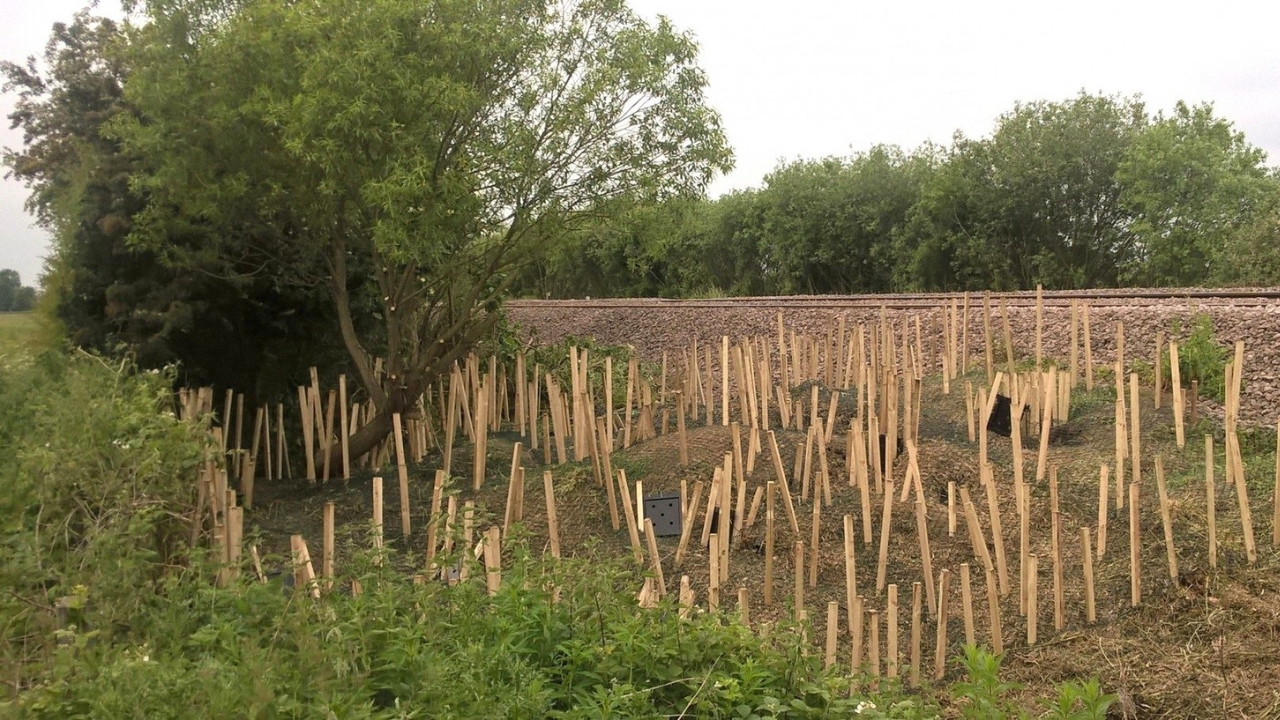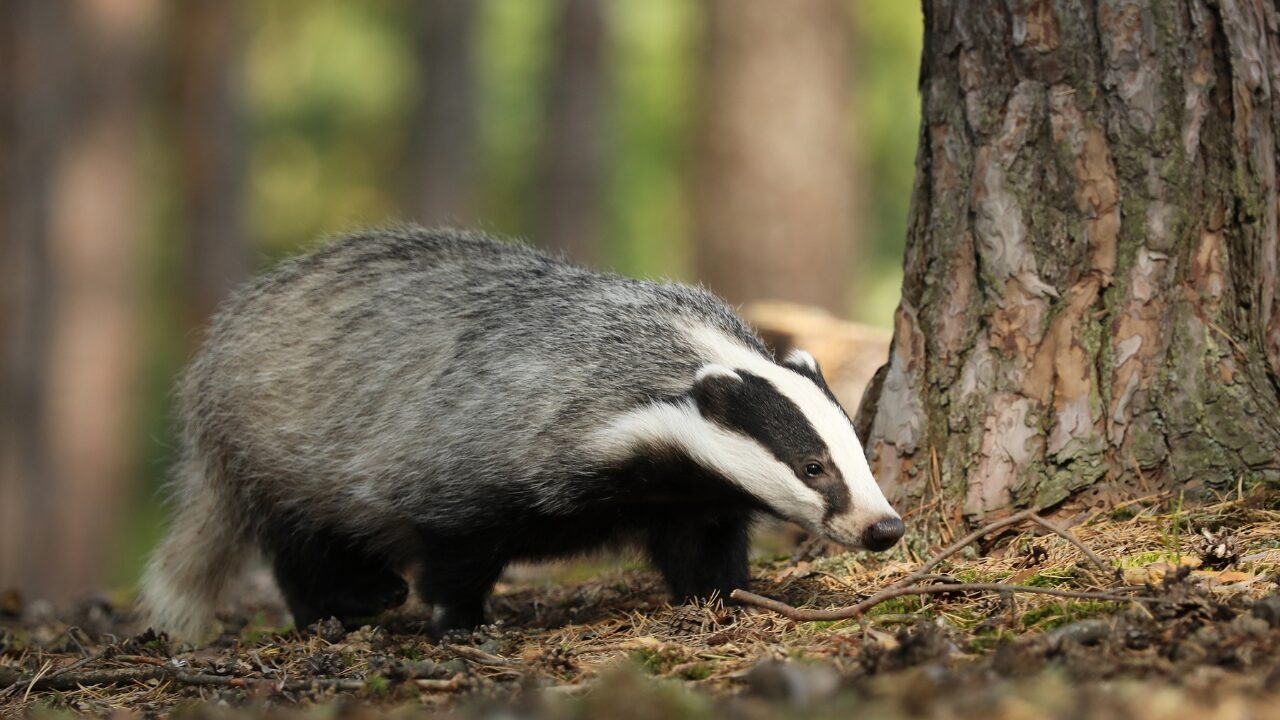Although not considered to be a rare species, the badger is an iconic and loved part of our countryside fauna. It is a protected species in the UK due to historic persecution. Legislation prevents harm to individual badgers and damage or destruction of their setts.
Where badger setts are present on sites proposed for development, our first consideration is determining if the setts can be retained and protected. Where that is not possible, badgers can be excluded from setts under licence, provided they have somewhere else to go and the exclusion is done outside of the badger breeding season.
Working with a professional ecologist to undertake a badger survey and mitigation at the pre-construction phase ensures badgers can be excluded without compromising the welfare of the animals while causing minimal disruption to development programs. This blog will provide you with key considerations and next steps if you suspect the presence of badgers before works begin.
What are the legal requirements to protect badgers and their habitats?
The Protection of Badgers Act 1992 in England and Wales prohibits harming, capturing, or disturbing badgers and damaging or destroying their setts, ensuring their welfare and conservation.
Similarly, the Natural Environment (Scotland) Act 2011 protects badger populations in Scotland, reinforcing strict controls over actions that may impact badgers. In Northern Ireland, badgers are protected by the Wildlife (Northern Ireland) Order 1985.
There are serious legal implications of interfering with or damaging badger setts in the UK, including fines or imprisonment. Therefore, it is in a developer’s best interest to work with a licensed professional if you plan to start work on land with confirmed or suspected badger presence.
Signs of badger activity on development sites in the UK
The presence of a badger sett is the most obvious indication of a badger’s presence on a piece of land. Under the Protection of Badgers Act 1992, a badger sett is defined as ‘any structure or place which displays signs indicating a badger’s current use.
Between late February and late April each year, there is a peak in territorial marking activity. Badgers mark their territories with latrines, an aggregation of dung pits.
A main badger sett typically has multiple entrances and is continuously occupied by badgers. Key signs indicating use by badger at the sett can include:
- Fresh digging and spoil heaps at sett entrances,
- Signs of bedding materials having been moved into the sett,
- Footprints and hairs.
Other signs of badger activity can be found in the vicinity of a badger sett or the wider area used by badgers for foraging; these include:
- Well-used trails,
- Push through points under fences or in hedgerows,
- Snuffle holes (small pits in the ground that badgers create while searching for food),
- Hairs caught in fencing.
Badgers also use outlier setts, which may consist only of a single entrance and only be used occasionally, so signs of these are less noticeable.
If you spot any of these signs, it is essential to contact an environmental consultant who can undertake a badger sign survey to determine whether badgers are present on the site and advise on appropriate mitigation and licences required before development begins.
Seasonal implications with identifying a badger sett
Although a badger field sign survey can be undertaken any time of the year, there are advantages in surveying during the winter months, when signs are less likely to be hidden by dense vegetation.
In the Autumn, sett entrances can easily collect leaves, look disused or have spider webs covering the entrances. Leaf fall could also obscure signs of paths or latrines, making the badger habitat harder to spot. These complications can occur quickly over a day and may obscure survey results by making the area seem inactive.
The optimum time for undertaking badger surveys is February to April, coinciding with a peak in territorial activity and a period when vegetation cover is minimal.
How badger surveys are undertaken
At Thomson Environmental Consultants, our initial involvement with sites proposed for development is to undertake a Preliminary Ecological Appraisal. If a suitable habitat for badgers is present on the site, then we would recommend a badger sign survey of the site and an additional 30m buffer.
Following the commission, we mobilise to the site to undertake the survey, after which we issue our report and recommendations.
If badger setts are found to be present and impacts cannot be avoided, then we would undertake further survey, if required, to inform a mitigation licence application; this may include monitoring of setts and a badger bait marking survey if necessary.
Badger sign surveys
This survey determines if badgers use the site and if badger setts are present. Any evidence of badgers is recorded and mapped, levels of use at badger setts are recorded and the sett type is determined.
Camera monitoring
We sometimes use trail cameras to determine the presence or absence of badgers at potential badger sets or to obtain further information on the levels of use of badger sets. This technique is very useful for potential badger setts where there is no obvious evidence of use by the badger. Still, evidence of absence is required to enable work to continue.
Badger bait marking
This type of survey may be required if there is a badger main sett on the site and impacts cannot be avoided.
The survey enables badger territorial boundaries to be determined. Our team places food (usually a mixture of peanuts and syrup) at badger main setts. The bait contains harmless, indigestible plastic markers; these are consumed by the resident badgers and eventually deposited at the dung pits throughout their range.
Following analysis, the colour of markers detected at latrines indicates territory boundaries and can give insights into individual badger movements.
Mitigation options if badgers are present on your development site
Depending on the results of the initial sign survey, further survey and/or an application to Natural England for a mitigation licence may be required as follows:
- Sign survey confirms proposal will not have an impact on badgers – no further action required.
- Sign survey identifies badger sett(s) on-site or within 30m of site. However, impacts can be avoided through project design. We would recommend a precautionary method of works document outlining the avoidance and protection measures that will be undertaken to avoid an impact on badgers.
- Sign survey identifies a badger main or annexe sett(s), and impacts cannot be avoided. Where the closure of a badger main sett is required, it is usually necessary to construct an artificial sett as an alternative place of shelter. An extended badger sign survey and badger bait marking survey may be required to determine a suitable location for an artificial sett.
- Sign survey identifies a badger outlier or subsidiary sett(s) and impacts cannot be avoided – where these smaller setts require closure, it’s likely that there are other larger setts in the local area that could be used by excluded badgers, an extended badger sign survey may be required to confirm the presence of these alternative places of shelter.
Badger mitigation works can only be undertaken from 1st July to 30th November, as this period is outside of the badger breeding season. Where necessary, Thomson Environmental Consultants can fast-track surveys and licence applications so that the mitigation works can be completed within the required timescales. Mitigation licences can be issued for the purpose of development or the purpose of preventing damage to land or property.
Our badger specialist, Paul Franklin, is a Natural England Registered Consultant who can register sites under the CL35 Badger Class Licence, enabling sites to be licenced much more quickly than other licensing options.
Case study: Badger sett closure for Network Rail
We supported a railway infrastructure site in East Yorkshire by undertaking an emergency badger sett closure. After we surveyed and mapped four badger setts, we undertook this mitigation option as the presence of badgers was impacting a main railway line and could cause major structural damage if the sett was to collapse.
As part of the badger sett closure, we installed metal one-way badger gates, and chain-link mesh and cleared dense vegetation to facilitate development works further. Overall, our work supported the client by allowing them to continue to work with minimal impact on the timeline.

Considerations if badgers are found outside of recommended sett closure times
It is unlikely that Natural England will licence mitigation works for badgers on a development site outside of the July to November period. For this reason, developers must plan to ensure that the presence of badgers does not result in project delays.
In exceptional circumstances, where badger digging causes damage to structures that could endanger life, it may be possible to undertake mitigation outside of the normal period.
Artificial sett creation and, badger exclusion fencing installation can be undertaken at any time of year.
How Thomson Environmental Consultants can support a site with active badger setts
Our expert team has large amounts of experience in survey, licensing and mitigation for badgers. Our experience spans various types of projects, including railway infrastructure, wind farms, housing developments and coastal flood defences.
Get in touch to discuss how we can support the legal compliance of your development site today!











